#operating system design
Explore tagged Tumblr posts
Text
Process "File" Descriptors (PID FD)
Linux in recent years has fixed some of the biggest annoyances I had with the UNIX model, and I'm feeling rather happy about this. One example of this is with how you can refer to processes.
With traditional UNIX APIs, you can never signal a process without a PID reuse race condition. The problem is somewhat inherent to the model: a PID is just an integer reference to a kernel-level Thing, but crucially, that Thing is not being passed around between processes. If I tell you the PID 42, that's not qualitatively different from you randomly picking the number 42 - either way, you can try to signal whichever process currently has PID 42. You might not have permissions to signal the current resident of that PID for other reasons, but you don't need a prior relationship to signal it - you don't need to receive any capability object from anyone. I haven't given you something tied to any process, I just gave you a number, and in the traditional UNIX model there's nothing better (more intrinsically tied to a single process) to pass around.
Compare file descriptors. An FD is also "just" an integer, but having that integer is worthless unless you also have the kernel-level Thing shared with your process. Even if I give you the number 2, you can't write to my stderr - I have to share my stderr, for example by inheritance or by passing it through a UNIX domain socket.
This difference is subtle but technically crucial for eliminating race conditions: since an FD has to be shared from one process to another through the kernel, and the underlying "file" descriptor/description is managed and owned by the kernel, when you later use the FD in a system call, the kernel can always know a fully unambiguous identity of which Thing you were referring to. If you just told it 42 in some global ID space, well do you mean the thing currently at index 42? Or did you really think you were referring to a thing which existed some time ago at index 42? That information has been lost, or at least isn't being conveyed. But if you told it 42 in your file descriptor table, now that can hold more information, so it can remember precisely which thing your 42 was referring to when you last received or changed it.
So how did Linux fix this?
We now have "PID FDs", which are magic FDs referring to processes. Processes "as a file", in a more true and complete way than the older procfs stuff.
Unlike PIDs, which by design can only travel around like raw numbers divorced from the true identity information they gesture at, a PID FD can never lose track of the process it refers to: if that process dies, its PID FD will forever "know" that its dead even if the PID is reused (because when that process yields to or is preempted by the kernel for the last time, the kernel remembers that there's a PID FD for it which needs to be updated, and even if the kernel recycles the PID it knows not to update that PID FD to point to the new process).
And we now have a system calls which let us
create a new process (or thread!) and have that return a PID FD instead of a PID (or "TID" in the case of threads, but in the Linux kernel those are basically the same thing)
signal a PID FD instead of the traditional PID (or TID), and
wait on a PID FD (in fact, the FDs just plug into the normal poll, select, or epoll system calls, so waiting on process or thread status can just hook into all existing event loops).
The one crucial thing is that we must not forget that these guarantees only start once we've gotten the PID FD: in particular, if you get a PID FD from a PID instead of getting the PID FD directly, you still need to check once if the PID hasn't gotten invalidated between when you got the PID and when you got the PID FD. This is something you can only do as the direct parent or (sub)reaper of the PID in question, because then you can use the traditional "wait" system call on the PID after getting the PID FD - if getting the PID FD succeeded but then the wait reports that the PID exited, that means you could've gotten a PID reuse by the time you got the PID FD from the PID.
So ideally, we just don't deal in PIDs at all anymore. When we create a process, we can get its PID FD atomically with the creation. (If we can't do that, if we're creating the process and then getting the PID FD with a separate system call, we do the wait check described in the last paragraph after getting the PID.) Then we pass the PID FD around - this might superficially look like passing an integer around, for example if you need to use the FD number in a shell redirection or communicate it to a child process, but underneath that the actual FD would be getting passed around either by inheritance, UNIX domain sockets, or whatever other means are available.
I've been wanting this for years. I've spent a lot of mental cycles trying to figure out the most elegantly minimal and composable primitives which could work around various problems in service supervision and automatic restarts in the face of random processes dying or getting killed. Those edge cases are now much more simple to totally cover by using the PID FD stuff, at least so long as we're willing to lose compatibility with the BSDs and other Unix-y systems until they catch up. Which, honestly, is an increasingly appealing proposition as Linux has been adding good stuff like this lately.
P.S. On that note, another thing we now have, is the ability to reach into a process (if we have its PID FD and have the same relationship to it (or elevated privileges) that we'd need to hook into it with debugger system calls) and copy a file descriptor out of it. This means we no longer need a child process to have been coded to share it with us through a domain socket or by forking or exec-chaining into a process we specify. Accessing file descriptors in already-running processes enables some neat monkey-patching and composition, and it's simpler to implement than the UNIX domain socket trick. I remember being frustrated about 7 years ago by the lack of ability to do exactly this - reach down into a child process (for example into a shell script, which has no built-in ability to access the "ancillary data" of a socket) and pluck a file descriptor out of it.
6 notes
·
View notes
Text



some scrollbars.
#ui#user interface#graphic design#operating systems#os#mac os x#macos#windows#windows xp#windows vista#windows 7#scrollbar#2000s#frutiger aero#skeuomorphism#oc
459 notes
·
View notes
Photo

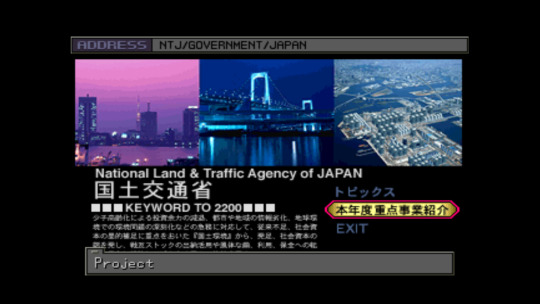
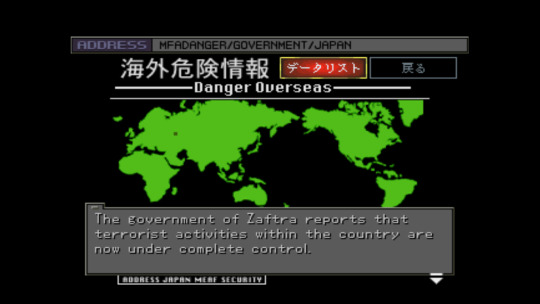



- Lessons in Japanese Game Design #3 -
Aside from what is easily one of the most stylish presentations in a videogame from the 1990s, one of Front Mission 3′s truly remarkable features consists of an in-game internet browser running within a simulated operating system. Expanding on the concept first rehearsed by Squaresoft in the second entry of the series, this massive component of the game can be accessed during breaks between missions, offering the player access to a number of pages for government entities, enterprises or other institutions. Access to additional websites is permitted as the game progresses.
This inventive solution offers unparalleled insight into the fictional universe of the game, in that it paints a very granular image of a futuristic society, its economy, geopolitical environment and zeitgeist. The information contained in these pages comes in the form of of bulletin boards, institutional updates, press releases, top secret data volumes, or the occasionally amusing curiosity. The user interface itself permits some degree of customisation, such as the option to disable the startup animation - itself a gorgeous visual relic that one hardly tires of watching - or changing the wallpaper pattern. Certain websites will also provide the option to download content, including images which can be set as said wallpaper. Other resources require secure access via the insertion of a password. Moreover, the player will have access to an email inbox to both read and send messages as may be relevant to advance onto the next stage.
Make-believe computer front-ends in video games were no novelty by the year 1999. Several sci-fi adventure, role-playing or action games allowed access to often very believable GUIs for the purpose of, for instance, retrieving precious clues or, say, disabling security locks. Aside from Front Mission 2, Final Fantasy VIII fans will likely remember the exciting Balamb Garden Network terminal. Kowloon's Gate's unforgettable Kownloonet terminals gave access to an email inbox, an all-important database and various other quotidian curiosities that helped fleshing out its mystic sci-fi narrative. The Japanese were privileged to have a complete version of Ace Combat 3: Electrosphere with access to an in-game encyclopedia the player could browse, as well as additional story elements told through email exchanges between the characters.
That same year, the western Tactical RPG sensation from the West, Jagged Alliance 2, dabbled in this idea. Only three short years later, CyberConnect2′s singular .hack series was designed around the idea of a MMORPG that plays offline, allowing for countless interactions with non-playable characters which simulate messaging formats of the era. Other notable examples include the 2chan boards in Steins;Gate or, inescapably, the passionate love letter to web 1.0 that is Hypnospace Outlaw.
Generally, all of the aforementioned titles are either entirely dedicated on a similar concept, or merely resorted to it as a secondary, amusing distraction. Front Mission 3 pioneered the use of this device as a storytelling technique. No other game of the time, at least to my knowledge, had dedicated so much of its resources to producing a credible replica of design and functionality of the internet as it once existed.
#front mission 3#squaresoft#the internet#lessons in japanese game design#storytelling#operating systems within games#internet within games
168 notes
·
View notes
Text
ppl need to stop making jokes about how it's so hard for "girls" to manage money/work/healthy lifestyle. because it's not a girl thing.

28 notes
·
View notes
Text
SupraHex Bitcoin Mining Machine Review
The SupraHex Bitaxe is an open-source Bitcoin mining machine designed for enthusiasts and developers seeking a hands-on approach to mining hardware. Featuring a modular and compact design, the machine allows easy integration into various setups, making it a practical choice for those interested in optimizing mining performance. The SupraHex Bitaxe supports standalone operation, meaning it can…
#ASIC chips#Bitcoin#bitcoin mining#cooling system#crypto#energy efficiency#hash rate#mining enthusiasts#mining setup#modular design#open-source mining#performance efficiency#power consumption#small-scale mining#standalone operation#suprahex#SupraHex Bitaxe#technology#thermal management#Wi-Fi connectivity
2 notes
·
View notes
Text
Gripping my table- Every day I get closer to writing a post about about fandom perception in milgram and how it gets to me that people are unwilling to reflect on the deeper themes of this work and how it handles the concepts of punishment and trauma and every day I have to remind myself that the reason Why I'm not writing that post is because I simply do not have the time, want, or are in the mood to write that post.
#digging my hands into my table- WE ARE OPERATING UNDER A SYSTEM DESIGNED TO HURT PEOPLE#THIS IS AN IMPORTANT PART OF THE EXPERIENCE#I have so many thoughts but also jesus fucking christ I Do Not Want To Think About it For More Than I Already Do
18 notes
·
View notes
Text
once again going to complain about how annoying it is to academically critique disney theme parks because everyone thinks you’re like a banksy dismaland escape from tomorrow “people having fun at disneyland are sheeple” edgelord like no you don’t understand i hate those guys Too their takes are immature and reductive
#also tend to critique people who like disney parks more than the parks themselves/the company/the capitalist consumerist system within which#we operate#like there’s truly no nuance or concept of wider social systems at play or even like. the design of the parks themselves and the advertising#they’re literally just making fun of the Type Of Person who goes there (or who they imagine that person is) and it’s pathetic tbh
16 notes
·
View notes
Text

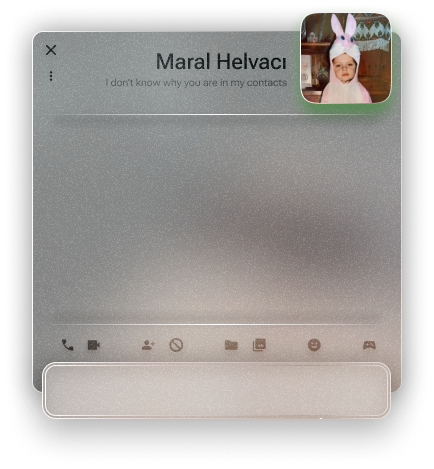

An instant messenger application/program from a personal operating system concept.
#glassmorphism#stained glass#texture#ui ux design#uidesign#frutiger#frutiger aero#frutiger aesthetic#skeumorphism#neumorphism#frkfw#figma#figmadesign#user interface#userexperience#os#operating system#concept
3 notes
·
View notes
Text
main idiosyncratic detail about LOS (besides that, in fact, all formal & informal reference to them alike is now LOS w/o the -307, as it understandably went in dialogue from the start but you'd think their name on the door / nameplate would be in full/official, so guess "LOS," in fact, is) is this portrait on their desk
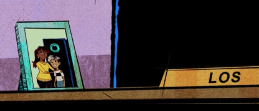
small screencap, didn't think to try fullscreening it at the time, preoccupied making 6am audio posts you know how it is, but the gist is there. supposing this could be some character/s that's actually previously known, but if they're so Especial as to be the sole pic around you might think LOS would've also been there, making an appearance. maybe w/this kid they were such a guiding counseling success that it's like ooh let's get a pic w/said guidance counselor, who keeps it on their guidance counselor desk. but it looks very Family Portrait (+ guidance counselor? as the main alternate theory) & that's just kind of The Convention like oh if someone has this nondecorative framed photo on their work desk it's their family, honestly i'm presuming LOS hit it off w/someone & that is a delight to me
#LOS-307#going ''we are using soft scifi magic ofc but i don't suppose they could have a kid. i mean maybe''#then ''wait even if they did the kid would not be like 13!!!''#from ''that's what they call me'' to that just being their Official name to them vs like. design or model number#don't see any other logorithmic operating systems around so not even an issue to consider#anyways who wouldn't also be delighted by LOS / hit it off with them. right on
4 notes
·
View notes
Text
head in my hands hal 9000 is not a robot... he's an artificial intelligence...
#if you really want brevity computer is also accurate i guess#you could concievably make an argument that due to controlling all the systems of the discovery and by some interpretations *being* the ship#he fulfills such robot criteria as performing complex automated tasks#however he was designed for neither one specific task nor fully automatic/remote controlled operation#(being a GENERAL artificial intelligence)#and thus is not a robot#also robots are associated with a degree of mobility whether a robot 'dog' or an assembly line arm#and the mobility offered by the discovery's propulsion has little versatility and can only affect the ship as a whole#umm if anyone else comes up with reasons hal could be considered a robot (by the merriam webster definition which i am using)#or if you have an alternate definition of robot you think is novel#i would be thrilled to engage with you#but for now i remain firm#2001 aso#aso#2001 a space odyssey
7 notes
·
View notes
Text
I love aokiji from one piece. Hes my little swimbly bimbly
#i like him a lot. i love how one piece gets a lot of morally gray antagonists#like. aokiji is kind of a really good guy in certain moments.#like he cares a lot about civillians . he just works inside of a really shitty system . hes like the idea of a ‘good’ cop#who like joined the marines with the intent of helping people but he does more harm than good .#i think it makes a lot of sense for him to have quit after the time skip. i know hes rolling with the blackbeard pirates now though#which is weird to me. bc that doesnt seem to suit his ideals. i think he’ll turn out to be undercover or some shit or a sword operative#im excited to learn more abt sword bc its apparently really important in the manga rn#but im not caught up so it’s just like. a vague thing i know now#*thinks about robin backstory* dereshishishishishi…..#also it makes me so mad how oda does so many of his black characters bc. aokiji is right there. you know how to draw black people#give that same treatment to usopp!!! or blackbeard. its lame. it sucks#related. hes a minor antagonist but i wish they did more with mr 5. hes another black character with a good design (at least in the manga)#the anime kind of connects the corners of his lips and makes them look bad but in the manga its natural yet still cartoony#he has such an underutilized devil fruit too T_T he can basically explode any part of his body.#and its usually used in the form of flicking exploding boogers at people (funny) but i was expecting him to get a cool moment where he just#fuckin. BOXES someone with explosions and some cool kicks. sadly we never get that though
4 notes
·
View notes
Text
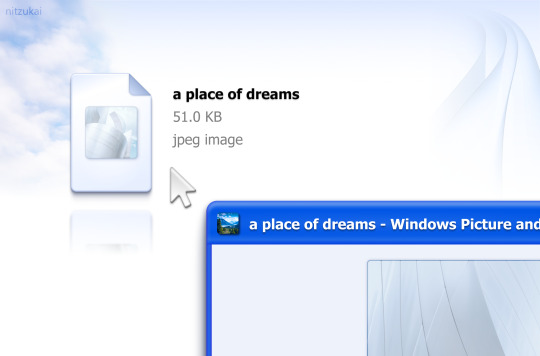
clicky click.
#uidesign#ui#user interface#windows#skeuomorphism#graphic design#operating systems#windows xp#2000s#oc#os#motion graphics#animation
242 notes
·
View notes
Text
hum ... i should design ocs based off operating systems ...
#💬#idk !!#a little frutiger aero guy ...#< NOT an operating system but i adore the design uhh . shit#aesthetic ?#yeah sure aesthetic
9 notes
·
View notes
Text
Words cannot describe how frustrated I am that life responds to disabled people by making their life harder and then pretending that it’s “assistant resources”.
If I am unable to spend multiple hours a day prepping, cooking and cleaning for meals why am I only allowed to buy things that need to be prepped and cooked?
(Also, I make minimum wage and it is apparently “too much” money so I don’t even qualify for benefits anyway.)
#disability#there’s so much and I can’t even describe how bullshit everything is#like#it’s almost funny how completely unfair and disgusting how our current systems operate#it’s literally designed to push out and kill disabled people
4 notes
·
View notes
Text

IBM z/OS operating system logo
1 note
·
View note
Text
the hunger games movies and the marketing surrounding them in general did the books so dirty
#the books were genuinely good imo#and an easily digestible critique of capitalism and authoritarianism#about how the working class will always be turned against each other by design of the system etc#but the movies were just operating within the same framework the books were criticizing#ie come watch children die for entertainment and here’s a dramatic love story#NO you’ve missed the POINT !!!!!!!
2 notes
·
View notes